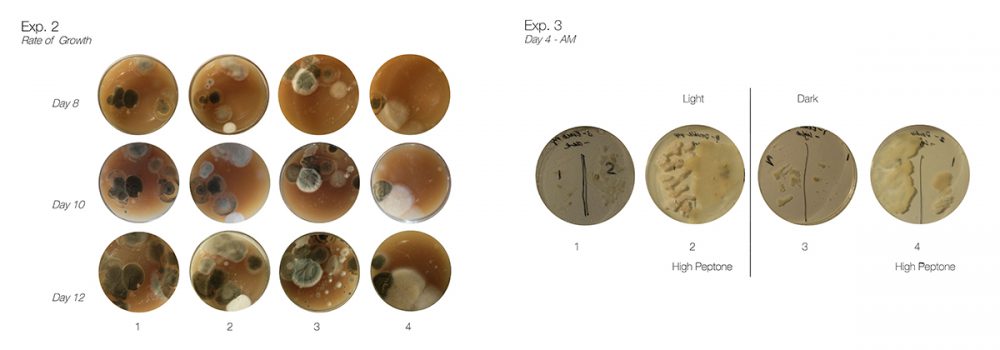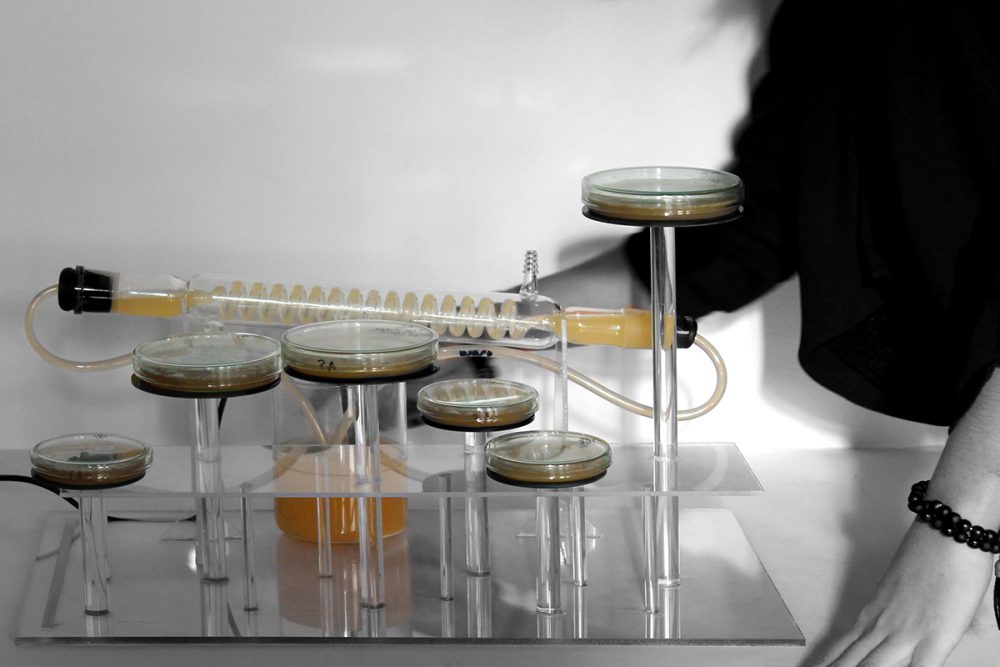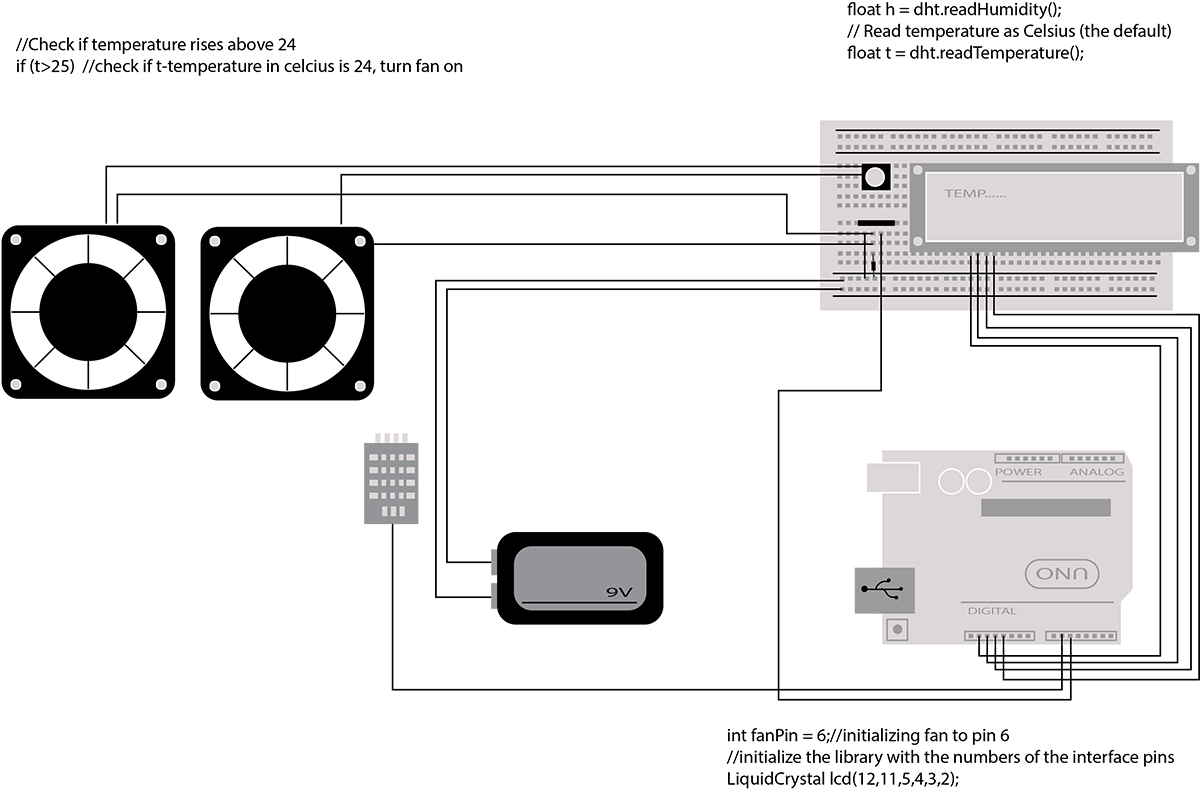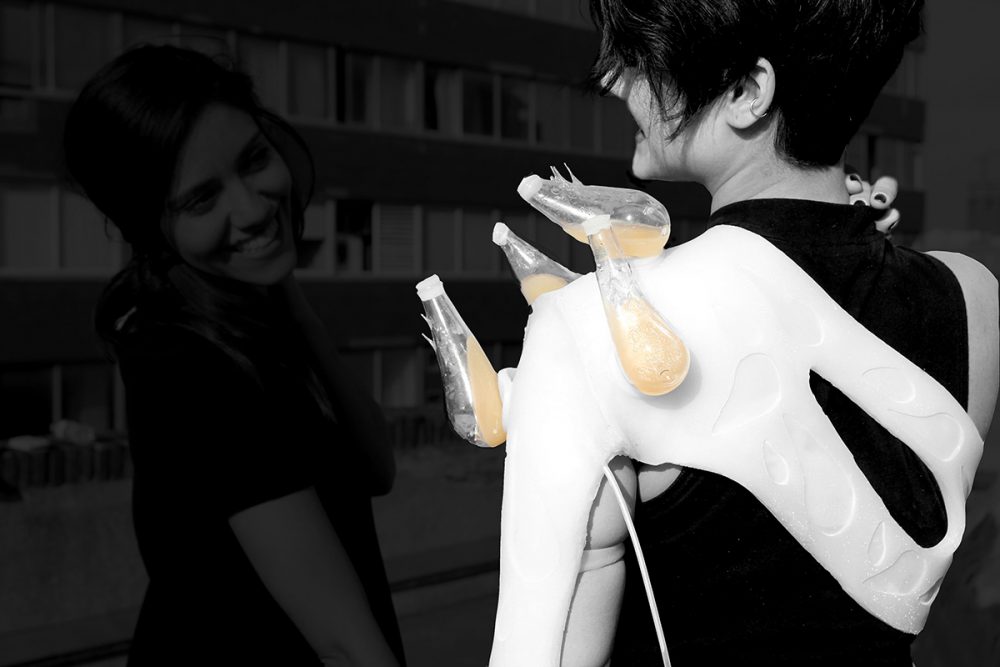bioluminescent bacteria
‘If the final frontier of design is to breathe life into the products and the buildings around us, to form a two-material ecology, then designers must unite these two worldviews. Here’s to a new age of design, a new age of creation, that takes us from a nature-inspired design to a design-inspired nature.’ (Oxman, N. Design at the intersection of technology and biology.)
This studio focuses on material computing and how we can learn to listen to nature to understand the constraint of our environment. We looked at the mechanisms of local energy, food and bio-material production in dense urban environment, focusing on how these bottom up processes of production could contributed to the urban morphogenesis of contemporary cities.
We focused on the bioluminescent bacteria (Vibrio Fischeri) that has this amazing quality to glow. Our interest lied in the way the bacteria communicates in order to produce this light. When the cell density of the bacteria is low, it does not produce any light but by means of communication, known as quorum sensing, they are able to signal a single cell to sense the number of bacteria around and make a coordinated response to glow. All bacterias have a chemical language that they use to communicate with each other. They all have a species specific language that indicates who is in their colony and who is not.
As part of this project an incubator was designed to keep the bacteria in the optimal environment and showcase each batch. The incubator had to keep the temperature within 15-24 degrees Celsius. Using an Arduino system that comprised of a temperature sensor as well as fans to cool the incubator if the temperature rose above 24 degrees.
The whole existence of life on earth evolved from bacteria, and we house them by the trillions on or inside of our bodies. These bacterias are incredibly important to our survival and, often, they have the power to decide our fate. Their group-behavior suggest an intelligence far beyond what most of us can imagine and it is this intelligence we wanted to explore, learn from and develop a project based on our findings.
We believe that the future is moving towards a more advanced technological intelligence in which our devices and sustainable urban infrastructure will become more adapted to the human body of the user. No longer will there be static object and us, biology and technology are merging. From the beginning of human history, people have used technology to enhance the human experience and extend the abilities of our bodies. The overarching aim of technology is to improve human lives, in the past, in regards to nature and technology, humans have manipulated and ‘conquered’ their environment for their own benefit. Now our aim is to engage in a more symbiotic relationship with nature, by understanding the natural patterns and processes better.
Now designers and inventors alike are beginning to take a new approach on how to work with new technologies and materials. We are undergoing a paradigm shift, where we are engaging in a more collaborative and symbiotic relationship with biology and technology. We will need to incorporate living materials into our urban environment. It is no longer an ‘advanced’ architectural solution to only incorporate mechanical systems to control the climatic environment. As a response to this, we have designed a wearable substratum that houses the Vibrio Fischeri bacteria and re-introduces energy production into the public space. The bacteria is no longer luminescent in the squid but on our skin. Furthermore the light is activated by a person’s movement, thus the human body and the piece itself develop this symbiotic relationship.













